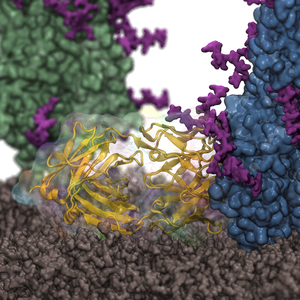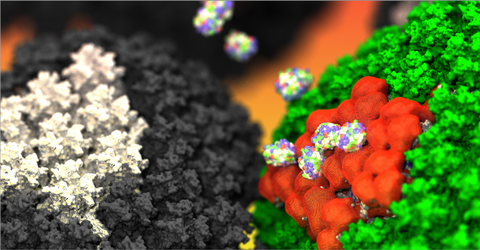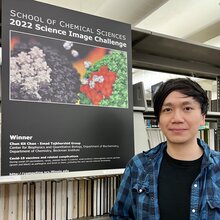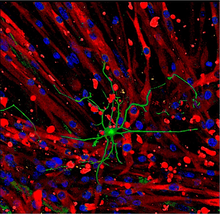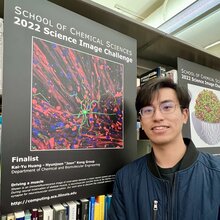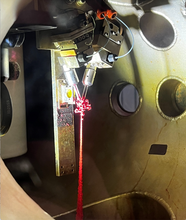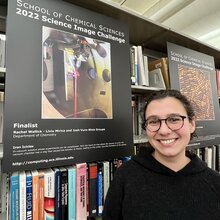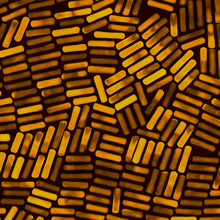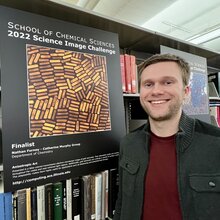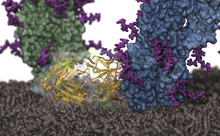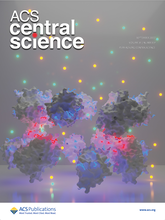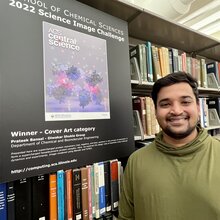The School of Chemical Sciences has announced the 2022 Science Image Challenge list of winners and finalists, which includes several images highlighting innovative research projects in the Department of Chemistry.
The winners and finalists were celebrated at an awards ceremony on Feb. 15, 2023, in the Chemistry Library in Noyes Laboratory.
The Challenge highlights computer-assisted or traditional scientific images that feature an object, process or technique within a scientific research project in the departments of chemistry and chemical and biomolecular engineering at Illinois. The challenge is open to SCS graduate and undergraduate students, postdoctoral associates and fellows, and staff. The entrant’s Principal Investigator must be a faculty member or an affiliate/adjunct of the departments of chemistry or chemical and biomolecular engineering.
The winning images and finalists' images from the 2022 Science Image Challenge will go on exhibit at Willard Airport in Champaign. The School of Chemical Sciences, the Department of Chemistry and the Department of Chemical and Biomolecular Engineering thank Willard Airport for hosting the winning images exhibit.
Main Category Winner
Chun Kit Chan, graduate student; Emad Tajkhorshid lab, chemistry
Image title: Covid-19 vaccines and related complications
Image description: During covid-19 vaccinations, rarely, platelet factor 4 (colorful, small proteins) misrecognizes vaccine particles (green and black) as pathogens and binds to them, preluding the rare vaccine-induced thrombosis.
Main Category Finalists
Kai-Yu Huang, graduate student, Kong Lab, Chemical & Biomolecular Engineering
Image title: Driving a muscle
Image description: An immunofluorescence image of innervation between a motor neuron (green) and skeletal muscles (red). During neural innervation of skeletal muscle, a neuromuscular junction forms at the interface becoming a chemical synapse for neuromuscular communication. Our work aims to discover the crosstalk between nerves and muscles.
Zane Thornburg, graduate student; Zaida Luthey-Schulten Lab, chemistry
Image title: A Meal for the Mind
Image description: Multi-scale model of the minimal cell, resembling a bowl of spaghetti, including membrane (8 nm white cubes) from reaction-diffusion simulations, DNA (yellow) from physically accurate Brownian dynamics of the entire chromosome, and ribosomes (red/pink) from all-atom structures.
Rachel Wallick, graduate student; Liviu Mirica and Josh Vura-Weis labs, chemistry
Image title: Iron Icicles
Image description: In-vacuum solution phase experiments can be complicated. Here the liquid jet that allows the solution to enter the vacuum chamber has a clog that caused the solution to freeze, leading to this pretty rock-like formation of the sample.
Nathan Forney, graduate student; Catherine Murphy lab, chemistry
Image title: Anisotropic Art
Image description: Presented is a false colored transmission electron microscopy image of gold nanorods. Their absorption peaks are tunable throughout the visible and near-infrared light regions. Additionally, gold nanorods can undergo a variety of surface modifications. This adaptability makes them highly useful for applications such as biosensing and photothermal therapy.
Defne Ozgulbas, graduate student, Emad Tajkhorshid lab, chemistry
Image title: The golden soldier: an influenza antibody
Image description: Getting the flu can be inevitable. However, after the infection, the human body has an army of soldiers called antibodies to protect you from the next virus loaded sneeze. Image captures the influenza virus’ surface (brown) glycoprotein, hemagglutinin (green, blue), attacked by an antibody (in gold) and surrendering, which prevents the virus from infecting human cells.
Cover Art Category Winner
Prateek Bansal, gradute student, Shukla lab, Chemical & Biomolecular Engineering
Image description: Presented are supercharged protein monomers (red, negative, and blue, positive) in the process of association to form a supercharged hexadecameric protein complex. Here, we explored the design rules of assembly using molecular dynamics and experiments. Image rendered using Blender and PyMOL.
